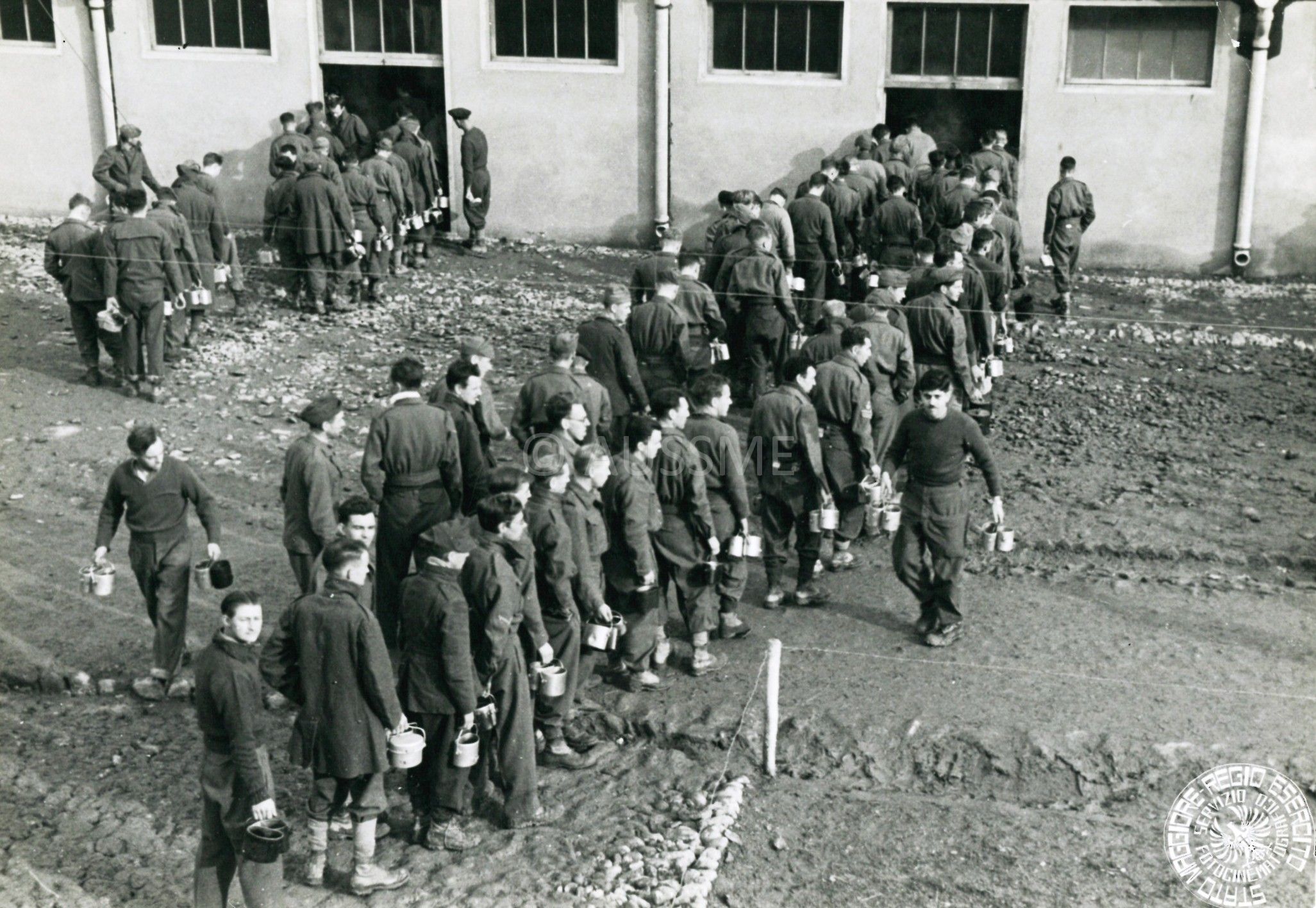Sheet by: Costantino Di Sante

Distribution of ration at concentration camp No. 52 in Pian di Coreglia (GE) - AUSSME Archive, Fototeca 2 Guerra Mondiale Italia 507/640
General data
Town: Coreglia Ligure
Province: Genova
Region: Liguria
Location/Address: Pian di Coreglia - Coreglia Ligure
Type of camp: Prisoner of War camp
Number: 52
Italian military mail service number: 3100
Intended to: NCOs – Troops
Local jurisdiction: Difesa Territoriale di Genova
Railroad station: Chiavari
Accommodation: Tents, huts
Capacity: 3000
Operating: from 10/1941 to 08/09/1943
Commanding Officer: Col. Oreste Celsi (October 1941 – April 1942); Col. Dino Castelli Taddei (May 1942 – September 1943)
Brief chronology:
October 1941: the camp was officially opened.
4 December 1941: 476 British PoWs arrived from PG 66 Capua.
11 December 1941: 63 English PoWs (52 privates and nine officers) arrived from Torre Tresca (Bari).
19 January 1942: 38 Indian and South African PoWs arrived from PG 85 Tuturano (Brindisi).
21 January 1942: 23 Australian, New Zealander and Indian PoWs arrived from PG 85 Tuturano.
31 January 1942: one Australian NCO and 17 privates arrived from PG 98 Castelvetrano (Trapani).
1 February 1942: 438 PoWs (436 New Zealanders and two Australians) arrived from PG 66 Capua.
4 February 1942: 334 South African PoWs arrived from PG 66 Capua.
10 March 1942: 136 PoWs (17 South Africans, 44 New Zealanders, three Australians, 71 English, and one Polish) arrived from PG 66 Capua.
19 June 1942: the guards discovered some tunnels under the huts.
May 1943: a work detachment was established in Rivarolo (Genoa).
12 June 1943: a work detachment was established at the S.I.A.C. farm estate in Mignago (Genoa).
Allied prisoners in the Coreglia Ligure camp
| Date | Generals | Officers | NCOs | Troops | TOT |
| 1.3.1942 | 1 | 266 | 2334 | 2601 | |
| 1.4.1942 | 1 | 259 | 2302 | 2562 | |
| 1.5.1942 | 1 | 270 | 2415 | 2686 | |
| 1.6.1942 | 2 | 246 | 2488 | 2736 | |
| 1.7.1942 | 2 | 246 | 2341 | 2589 | |
| 1.8.1942 | 2 | 285 | 2551 | 2838 | |
| 1.9.1942 | 4 | 287 | 2591 | 2882 | |
| 30.9.1942 | 5 | 295 | 2212 | 2512 | |
| 31.10.1942 | 5 | 374 | 2228 | 2607 | |
| 30.11.1942 | 5 | 454 | 2589 | 3048 | |
| 31.12.1942 | 5 | 404 | 3057 | 3466 | |
| 31.1.1943 | 5 | 441 | 3003 | 3449 | |
| 28.2.1943 | 4 | 440 | 2994 | 3438 | |
| 31.3.1943 | 4 | 422 | 2872 | 3298 | |
| 30.4.1943 | 3 | 424 | 2628 | 3055 | |
| 31.5.1943 | 3 | 423 | 2315 | 2741 | |
| 30.6.1943 | 4 | 664 | 2847 | 3515 | |
| 31.7.1943 | 2733 | 2733 | |||
| 31.8.1943 | 8 | 730 | 2563 | 3301 | |
Camp’s overview
PG 52 Pian di Coreglia was built by the military engineers of the Caperana di Chiavari barracks in an area next to the Entella stream. It was officially opened in October 1941. During the war, the tents were gradually replaced by huts. In a report dated 4 July 1942, complied by the Genoa Prefettura for the Interior Ministry’s Public Health General Directorate, the camp was described as:
2) The number of PoWs in the camp is 2,742; they are English, Australian, New Zealanders, and South Africans.
3) The PoWs are supplied with clothing and undergarments; conditions are decent.
4) Food rations are on par with that of our garrison soldiers. The PoWs themselves prepare the food. Each PoW regularly receives two Red Cross parcels a week containing preserved foodstuff.
5) The kitchen, located on the south side of the camp, is a brick building equipped with many wide cooking hobs, on which large pots are placed to cook food. The mess hall is covered by a canopy wide enough to accommodate all PoWs and equipped with enough tables and stools.
6) Water is provided by one of the three wells built some time ago to provide fresh water to the town of S. Margherita Ligure. Water, after a chemical and bacteriological exam, has been declared potable. Thanks to some electrical engines, the water is pushed up into raised tanks, from which it is distributed with pipes to the various services as needed.
7) Two outhouses are placed near the stream; they are made of bricks with an Eternit [asbestos] roof, a surrounding wall 160 cm high, and many entrances from the front. It can accommodate 90 people. Each spot has separation bulkheads and a slate footrest.
Recently, new permanent night-time outhouses had been opened near the aforementioned huts.
8) The lavatories are placed upstream of the outhouses, and showerhead pipes provide water. The water falls on the lavatory floor, which is made of stone and cement.
9) The infirmary is placed in an old farmhouse 300 metres from the camp. On the ground floor are the ambulatories and the waiting rooms; on the upper floor, there are nine rooms for hospitalisation with 35 beds (barrack’s cots) and a small isolation ward made of two rooms with access to fresh water and a separate outhouse. All rooms are whitewashed with lime.
10) The personal disinfection services are located in other rooms on the ground floor in the infirmary’s annex. There are an adequate number of showers, a changing room, a dressing room [camera per spogliatoio, camera per vestizione], and a disinfection chamber (using sulphate and hydrogen cyanide). A Giannolli heater is used to disinfect and disinfest personal clothing and bed sheets, and a stove provides war water in the bathrooms.
The PoWs and personnel are pretty clean.
The PoWs’ health conditions are optimal. In fact, only ten PoWs are currently in the infirmary (rheumatisms, bronchitis, light chirurgical wounds, no infective illnesses) and morbidity is only 0.37%. The number of PoWs examined in the ambulatories is about 20 or 30 a day.
The camp is generally pretty clean.
The camp’s good hygienic and health conditions were confirmed by the provincial doctor’s reports and by the Military Health Directorate, which inspected the camp many times. However, the reports of the Protecting Power delegates were less enthusiastic. They noted some administrative deficiencies and structural issues. There was no draining system for the water, the space outside the camp for recreational activities was insufficient, and the dormitories were not heated.
Still, living conditions were good. The mail service was well organised, the cookhouses worked efficiently, food was adequately provided, there were learning courses («from elementary mathematics to philosophy to metallurgy), a theatre company, a concert group, and three music bands. Italians ran the military shop, and the profits were used to improve the PoWs’ conditions.
Starting in autumn 1942, some PoWs were assigned to work on some nearby farm estate. During the following spring, a portion of the PoWs was sent to various work camps. For example, in Rivarolo (today a quarter of Genoa), a group of PoWs from PG 52 were employed for several works: building a bridge, building some scaffolding, preparing building materials, and digging a riverbed (most likely the Polcevera).
On 12 June 1943, a new work detachment, comprised of 50 South Africans, was established on the S.I.A.C farm estate in Mignago (Genoa).
PG 52 received new PoWs continuously from the closed camps in the south of Italy and sent them to work detachments until 8 September 1943. During the following days, many escaped and managed to reach Switzerland.
After the PoWs’ escape, the camp remained empty until December 1943, when the Italian Social Republic used it as a provincial internment camp for Jews. On 20 January 1944, the last group of 29 internees was deported. All the people interned in this period were murdered in Auschwitz. The camp was finally closed between June and July 1944 after a partisan attack in the area.
After the war, the huts were dismantled. On 21 January 2002, a plaque was placed in the camp’s area to commemorate the victims.
Archival sources
- Archivio Centrale dello Stato, Ministero dell’Interno, Direzione Generale Pubblica Sicurezza, A5G, II GM, bb. 116, 117, 118 e 140, Verbali e Notiziari della Commissione Interministeriale per i Prigionieri di Guerra
- Archivio Centrale dello Stato, Ministero dell’Aeronautica, Gabinetto, b. 70, Verbali e Notiziari della Commissione Interministeriale per i Prigionieri di Guerra
- Archivio Centrale dello Stato, Onorcaduti, b. 1
- Archivio Ufficio Storico Stato Maggiore dell’Aeronautica, SMA I REP. 1° Vers., b. 51
- Archivio Ufficio Storico Stato Maggiore dell’Esercito, N1-11, bb. 840, 1130
- Archivio Ufficio Storico Stato Maggiore dell’Esercito, H8, b. 79
- Archivio Ufficio Storico Stato Maggiore dell’Esercito, L10, b. 32
- The National Archives, WO 224/119
- The National Archives, WO 361/1890
- The National Archives, TS 26/95
Bibliography
- Absalom R., A Strange Alliance. Aspects of escape and survival in Italy 1943-45, Firenze, Olschki, 1991 trad. it. L’alleanza inattesa. Mondo contadino e prigionieri alleati in fuga in Italia (1943-1945), Bologna, Pendagron, 2011
- Getto Viarengo G., Documenti per una storia del fascismo nel circondario di Chiavari, Chiavari, Pane e vino, 2001
- Insolvibile I., I prigionieri alleati in Italia 1940-1943, tesi di dottorato, Dottorato in "Innovazione e Gestione delle Risorse Pubbliche", curriculum “Scienze Umane, Storiche e della Formazione”, Storia Contemporanea, Università degli Studi del Molise, anno accademico 2019-2020,
- Minnella M., Campo 52. Pian di Coreglia 1941-1944, Milano, Mursia, 2019
